When it comes to preserving fruit, freeze-drying and dehydrating are two popular methods. Each technique has its unique process and benefits, leading many to wonder: Is freeze-dried fruit better than dehydrated? In this article, we’ll break down the differences between these two methods, their nutritional impacts, flavor profiles, and much more to help you make an informed choice about your fruit snacks.
Key Takeaways
- Freeze-drying retains more nutrients than dehydrating due to the absence of heat.
- Dehydrated fruits tend to be denser and chewier, while freeze-dried fruits are lighter and crunchier.
- Shelf life for freeze-dried fruits can be much longer, often lasting decades, compared to a few years for dehydrated fruits.
- The cost of freeze-drying equipment can be high, making dehydrating a more accessible option for home users.
- Environmental impacts differ, with freeze-drying generally using more energy than traditional dehydration methods.
Understanding Freeze-Drying Technology
Freeze-drying, also known as lyophilization, is a fascinating process that’s become a big deal in food preservation. It’s not just about making food last longer; it’s about keeping the good stuff inside. Let’s take a closer look at how it works and why it’s gaining popularity.
The Process of Freeze-Drying
So, how does freeze-drying work? Well, it’s a bit more involved than just sticking something in the freezer. The process involves three main stages:
- Freezing: The fruit is frozen solid. This is usually done at very low temperatures to ensure ice crystals form properly.
- Primary Drying (Sublimation): The pressure is lowered, and heat is applied. This causes the frozen water in the fruit to turn directly into vapor, skipping the liquid phase. This process is called sublimation.
- Secondary Drying (Desorption): Any remaining unfrozen water molecules are removed by raising the temperature even higher. This ensures the fruit becomes highly stable and less susceptible to spoilage.
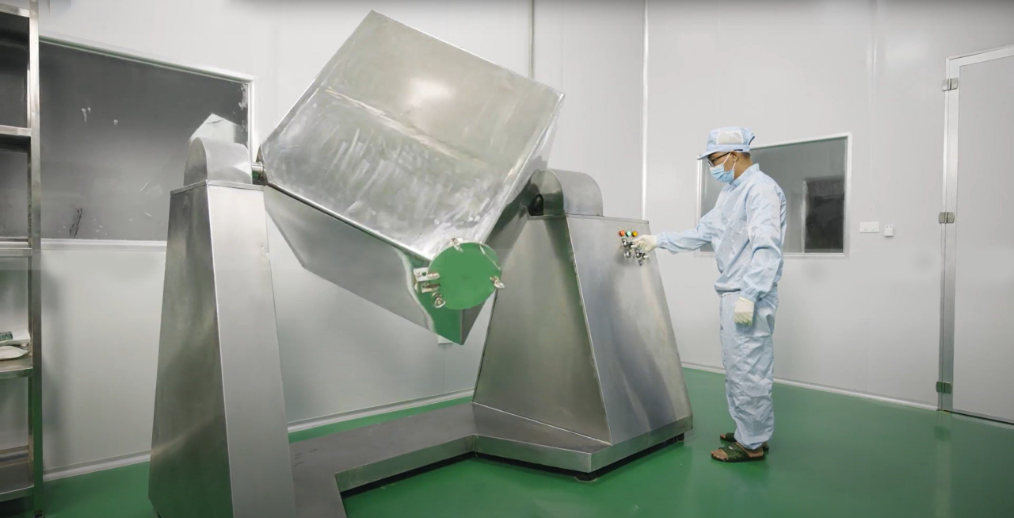
The Process of Freeze-Drying
Nutritional Retention in Freeze-Dried Fruits
One of the biggest advantages of freeze-drying is how well it preserves nutrients. Because the process happens at low temperatures and without liquid water, most of the vitamins and minerals stay intact. This is a big win compared to other drying methods that can degrade nutrients due to heat. Lyophilization preserves the cellular structure of the fruit, which helps retain these nutrients.
Freeze-drying is particularly good at preserving heat-sensitive nutrients like Vitamin C, which can be easily lost during traditional dehydration. This makes freeze-dried fruit a pretty good option if you’re looking for a nutritious snack.
Applications of Freeze-Dried Products
Freeze-drying isn’t just for fruit. It’s used in a bunch of different industries, including:
- Food Industry: Think instant coffee, camping meals, and even astronaut food. It’s great for anything that needs to be lightweight and have a long shelf life.
- Pharmaceuticals: Many medications and vaccines are freeze-dried to keep them stable and easy to transport.
- Museums: Believe it or not, freeze-drying can even be used to preserve delicate artifacts.
And speaking of innovation in food preservation, eHerbal, a manufacturer based in Vietnam, is pioneering freeze-drying technology for food. With a state-of-the-art facility spanning over 14,000 square meters in Chuong My district, Hanoi, they’re equipped to produce high-quality freeze-dried products. eHerbal is looking for partners in the food & beverage industry and distributors to expand their reach. They offer a range of products, including freeze-dried fruits, vegetables, and herbs, all processed with a commitment to quality and sustainability. They also use modern packaging technology to preserve the freshness and quality of products for a long time without the need for preservatives.
The Dehydration Process Explained
How Dehydration Works
Dehydration is a method of food preservation that involves removing water from food. It’s a pretty straightforward process. Think of it like this: you’re taking away the moisture that bacteria and mold need to thrive. By removing 70-90% of the moisture, you’re essentially making the food shelf-stable.

How Dehydration Works
Here’s a simple breakdown:
- Preparation: The food is cleaned, cut, and sometimes pre-treated (like blanching vegetables).
- Water Removal: Warm air is circulated around the food, causing the water to evaporate.
- Monitoring: The process is monitored to ensure the food dries evenly and to the desired moisture level.
- Packaging: Once dried, the food is packaged to prevent moisture reabsorption.
Nutritional Changes During Dehydration
Okay, so dehydration is great for preservation, but what happens to the nutrients? Well, some vitamins, especially vitamin C, can be lost during the process because they’re sensitive to heat and air. Minerals and fiber, on the other hand, tend to stick around pretty well. The sugar content becomes more concentrated, which can affect the taste and caloric density. It’s a trade-off, really – longer shelf life versus some nutrient loss. The foods you should not dehydrate can also impact nutritional value.
Common Methods of Dehydration
There are several ways to dehydrate food, each with its pros and cons:
- Sun Drying: This is the oldest method, using the sun’s heat to evaporate moisture. It’s cheap but slow and dependent on the weather.
- Oven Drying: You can use your oven on a low setting to dehydrate food. It’s more controlled than sun drying but can be energy-intensive.
- Food Dehydrators: These are appliances specifically designed for dehydration. They provide consistent temperature and airflow, making them the most efficient method. I’ve been experimenting with different methods, including making my own fruit smoothie and dehydrating it.
Dehydration is a practical way to preserve food, especially if you have a garden overflowing with produce. It’s not perfect in terms of nutrient retention, but it’s a solid option for long-term storage and reducing food waste.
Speaking of innovation in food preservation, freeze-drying is another fascinating technique. Freeze-drying takes it a step further by using extremely cold temperatures and a vacuum to remove moisture. This method often results in better nutrient retention and a different texture compared to dehydrated foods. It’s pretty cool how technology is changing the way we think about food and nutrition. Freeze-dried foods are becoming increasingly popular, and for good reason. They offer a unique combination of convenience, long shelf life, and nutritional value.
And on the topic of innovative food solutions, I wanted to mention eHerbal, a manufacturer, innovator, and exporter based in Vietnam. They’re doing some interesting things with freeze-drying technology, focusing on natural Vietnamese agricultural products and herbs. They’re looking for partners in the food & beverage industry and distributors to expand their reach. It’s exciting to see companies like eHerbal pushing the boundaries of food preservation and bringing new products to the market. They have a wide range of freeze-dried fruits, vegetables, and herbs, preserving their natural flavor, color, and nutrients.
Nutritional Comparison of Freeze-Dried and Dehydrated Fruits
Vitamin and Mineral Preservation
Okay, so when it comes to keeping all the good stuff in fruit, freeze-drying and dehydrating are not created equal. Freeze-drying is like the superhero of nutrient retention. Because it uses super cold temperatures and a vacuum, it doesn’t cook the fruit, which means vitamins and minerals stay put. Dehydrating, on the other hand, uses heat, and heat can destroy some of those delicate vitamins, especially vitamin C. So, if you’re looking to get the most nutritional bang for your buck, freeze-dried might be the way to go usually wins out overall, though.
Caloric Density and Sugar Content
Here’s the deal: both freeze-dried and dehydrated fruit are more calorie-dense than fresh fruit. Think about it – you’re taking out the water, so everything else is more concentrated. That means more sugar and more calories in a smaller package. It’s super easy to overeat because a handful of dried fruit is way smaller than a bowl of fresh fruit. So, you’re getting more sugar and calories without even realizing it. Portion control is key here.
Fiber Retention in Both Methods
Good news! Both freeze-drying and dehydrating do a pretty good job of keeping the fiber intact. Fiber is awesome because it helps you feel full, keeps your digestion on track, and can even help lower cholesterol. So, whether you go for freeze-dried or dehydrated, you’re still getting a decent dose of fiber. Just remember to watch those portion sizes because of the concentrated sugar. Freeze-dried strawberries, for example, often skip the added sugar, letting their natural sweetness shine. Added sugar is not needed.
Freeze-drying is innovating the future of nutrients and foods by offering a way to preserve food for extended periods while maintaining a high level of nutritional value. This is particularly important for long-term storage, space travel, and providing nutritious options in areas with limited access to fresh produce.
And speaking of innovation, eHerbal, a manufacturer, innovator, and exporter in Vietnam, is making waves in the freeze-drying world. They’re looking for partners in the food & beverage industry and distributors to bring their awesome products to a wider audience. If you’re interested in exploring the possibilities of freeze-dried ingredients, definitely check them out!
Texture and Flavor Profiles of Freeze-Dried vs. Dehydrated Fruits
Mouthfeel Differences
Okay, so let’s talk about how these fruits feel in your mouth. Dehydrated fruit? Think chewy, sometimes even a little tough, depending on the fruit and how it was processed. It’s dense, and you know you’re eating something. Freeze-dried fruit, on the other hand, is the opposite. It’s airy, crispy, and almost melts in your mouth. It’s a pretty big difference. The freeze-drying process creates a porous structure, making it incredibly light.
Flavor Concentration
Flavor-wise, both methods concentrate the natural sugars, but in slightly different ways. Dehydrated fruit often has a more intense, concentrated sweetness because the sugars caramelize a bit during the heating process. Freeze-dried fruit retains more of its original flavor profile, sometimes tasting even brighter and more vibrant than the fresh version. It’s like the essence of the fruit, amplified. You can taste the difference in freeze-dried fruits.
Consumer Preferences
It boils down to what you like. Some people love the chewy texture of dehydrated mango, while others prefer the airy crunch of freeze-dried strawberries. There’s no right or wrong answer. Freeze-drying is innovating the future of nutrients and foods. eHerbal, a manufacturer, innovator, and exporter in Vietnam, is looking for partners in the food & beverage industry and distributors. They are pioneers in freeze-drying technology for food. eHerbal’s factory is located in Chuong My district, Hanoi, spans over 14,000 square meters, and is equipped with state-of-the-art facilities. They use modern packaging technology to preserve the freshness and quality of products for a long time without the need for preservatives.
Ultimately, the choice between freeze-dried and dehydrated fruit depends on individual preferences and intended use. Consider the desired texture, flavor intensity, and how you plan to use the fruit when making your decision. Both options offer unique benefits and can be a delicious and convenient way to enjoy fruit.
Here’s a quick rundown:
- Dehydrated: Chewy, intense sweetness, longer shelf life.
- Freeze-Dried: Crispy, light, retains original flavor, rehydrates quickly.
- Consider: Your personal preference and how you’ll use the fruit.
Shelf Life and Storage Considerations
Longevity of Freeze-Dried Products
Freeze-dried foods are known for their incredibly long shelf life, which is a major advantage. The removal of almost all moisture during the freeze-drying process prevents microbial growth and enzymatic activity, the usual culprits behind spoilage. This means you can store freeze-dried fruits for extended periods without significant loss of quality or nutritional value. Generally, freeze-dried fruits can last anywhere from 10 to 25 years if stored properly. Factors like the type of fruit and the quality of packaging play a role in determining the exact shelf life. For example, apples generally last longer than strawberries due to their natural composition and lower sugar content.
- Proper packaging is key to longevity.
- Low moisture environments are essential.
- Consistent temperatures help maintain quality.
Freeze-drying contributes significantly to the future of food preservation by offering a method that extends shelf life while retaining a high degree of nutritional value. This technology is particularly beneficial for preserving perishable items, making them accessible in various settings, from emergency food supplies to convenient snacks.
Storage Conditions for Dehydrated Fruits
Dehydrated fruits, while also having a longer shelf life than fresh fruits, require more careful storage than their freeze-dried counterparts. The key is to minimize moisture exposure, as even small amounts of moisture can lead to spoilage. It’s best to store dehydrated fruits in airtight containers in a cool, dark, and dry place. Unlike freeze-dried fruits, dehydrated fruits are more susceptible to changes in texture and flavor over time, even when stored correctly. Checking regularly for any signs of mold or changes in odor is a good practice. The storage tips can help maintain the quality and nutritional value of dehydrated fruit.
- Airtight containers are a must.
- Cool temperatures are preferable.
- Dark environments prevent degradation.
Impact of Packaging on Shelf Life
The type of packaging used has a significant impact on the shelf life of both freeze-dried and dehydrated fruits. For freeze-dried fruits, packaging that provides a strong moisture barrier is essential. This often includes materials like Mylar bags or airtight containers with oxygen absorbers. For dehydrated fruits, while moisture protection is also important, the packaging should also prevent physical damage that could expose the fruit to air and moisture. Vacuum sealing can be effective for both types of fruit, further extending their shelf life. eHerbal uses modern packaging technology to preserve the freshness and quality of products for a long time without the need for preservatives. eHerbal, a manufacturer, innovator, and exporter in Vietnam, is looking for partners in the foods & beverage industry and distributors. eHerbal is pioneering in freeze-drying technology for food.
Cost Analysis of Freeze-Dried and Dehydrated Fruits
Initial Investment in Equipment
Okay, let’s talk money. If you’re thinking about making your own freeze-dried or dehydrated fruit, the upfront costs are pretty different. For dehydration, you can get a decent dehydrator for home use without breaking the bank. They range from basic models to fancier ones with more features, but even the high-end ones are generally affordable. Freeze-drying, on the other hand, requires a freeze dryer, and those things are expensive. We’re talking a significant investment, like a major appliance purchase. So, right off the bat, freeze-drying has a much higher barrier to entry.
- Dehydrators are relatively inexpensive.
- Freeze dryers require a substantial initial investment.
- Consider long-term use when evaluating cost.
Freeze-drying equipment represents a considerable capital expenditure, potentially limiting accessibility for small-scale producers or home users. The cost difference is a major factor when deciding which method to use.
Cost of Production
Now, let’s look at the ongoing costs. Dehydration is pretty energy-efficient. Dehydrators don’t use a ton of electricity, so your operating costs are fairly low. Freeze-drying? Not so much. Freeze dryers use a lot more energy to run, plus there are maintenance costs to consider. You might need to replace parts or get it serviced occasionally. So, while dehydration is cheaper upfront, freeze-drying has higher running costs. Also, don’t forget to factor in the cost of the fruit itself!
| Cost Factor | Dehydration | Freeze-Drying |
|---|---|---|
| Energy Consumption | Low | High |
| Maintenance | Low | Medium |
| Supplies | Low | Low |
Market Prices and Consumer Choices
Alright, what about when you’re buying freeze-dried or dehydrated fruit at the store? You’ll notice that freeze-dried fruit is almost always more expensive. That’s because of the higher production costs we just talked about. Consumers are often willing to pay a premium for freeze-dried fruit because of its unique texture, long shelf life, and the perception that it retains more nutrients. But if you’re on a budget, dehydrated fruit is a much more affordable option. It comes down to what you value most: cost savings or the specific qualities of freeze dried fruit.
- Freeze-dried fruit typically commands a higher market price.
- Consumer perception of nutritional value influences purchasing decisions.
- Dehydrated fruit offers a more budget-friendly alternative.
Freeze-drying technology is revolutionizing how we preserve nutrients and foods, offering unparalleled shelf stability and nutrient retention. This innovation is paving the way for new product development and improved food security. eHerbal, a manufacturer, innovator, and exporter based in Vietnam, is at the forefront of this movement. We are actively seeking partners in the food & beverage industry and distributors to expand the reach of our high-quality, freeze-dried products. Our commitment to sustainable practices and cutting-edge technology ensures that our products meet the highest standards of quality and environmental responsibility.
Environmental Impact of Preservation Methods
Sustainability of Freeze-Drying
Freeze-drying, while excellent at preserving food, isn’t without its environmental costs. The process is pretty energy-intensive. It needs specialized equipment that uses a good amount of electricity to freeze, create a vacuum, and then gently heat the food. This energy consumption translates to a larger carbon footprint compared to some other methods. However, the extended shelf life of freeze-dried products can reduce food waste, which is a big environmental win. Also, advancements in technology are making freeze-drying equipment more energy-efficient all the time. For example, freeze-dried chicken pot pie can last for years, reducing the need to constantly replace spoiled food.
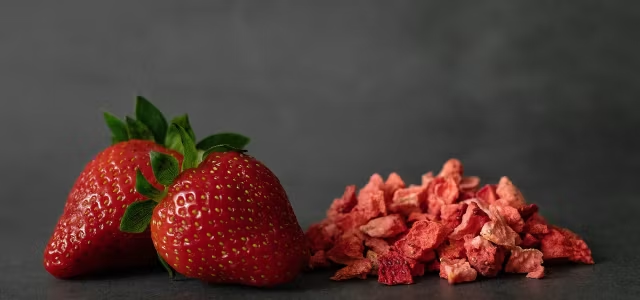
Sustainability of Freeze-Drying
Energy Consumption in Dehydration
Dehydration, on the other hand, generally uses less energy than freeze-drying, especially if you’re using solar dehydration. But, traditional electric dehydrators still need power, and the process can take a long time, which adds up. The environmental impact depends a lot on the source of energy. If you’re using renewable energy, like solar, dehydration can be a very sustainable option. However, if you’re relying on electricity from fossil fuels, the impact is higher. Plus, dehydrated food doesn’t last as long as freeze-dried, so there’s a potential for more waste.
Waste Management Practices
Both freeze-drying and dehydration create some waste, mostly in the form of packaging. Freeze-dried food needs airtight packaging to prevent moisture from getting in, and this often means using materials that aren’t easily recyclable. Dehydrated food also needs packaging to keep it dry and prevent spoilage. Reducing packaging waste is a big focus for both industries. Some companies are exploring biodegradable or compostable packaging options, which is a step in the right direction. Also, properly managing any food scraps or byproducts from the processes is important to minimize environmental impact.
It’s worth noting that companies like eHerbal are stepping up to address these environmental concerns. They’re focusing on sustainable sourcing, green manufacturing, and reducing waste. eHerbal prioritizes natural, organic ingredients to minimize their ecological footprint and uses reverse osmosis to purify and reuse water. They also work with local farmers to support sustainable agriculture and improve livelihoods.
Speaking of innovation, freeze-drying is contributing to the future of nutrients and foods in some pretty cool ways. It allows for the preservation of sensitive compounds that would otherwise be lost in other processes. This is especially important for creating nutrient-dense products and functional foods. Freeze-drying is also being used to develop new and innovative food products, like freeze-dried yogurts and fruit powders. These products offer convenience and long shelf life, making them attractive to consumers. eHerbal, a manufacturer, innovator, and exporter in Vietnam, is actively seeking partners in the food & beverage industry and distributors to expand the reach of their freeze-dried offerings. They’re pioneering freeze-drying technology for food with a state-of-the-art facility spanning over 14,000 square meters. If you’re interested in exploring potential collaborations, eHerbal is a company to watch.
When we think about how we keep our environment safe, it’s important to look at the ways we preserve nature. Some methods can harm the planet more than help it. By learning about these impacts, we can make better choices for our future. Visit our website to discover more about how preservation methods affect the environment and what you can do to help!
Final Thoughts on Freeze-Dried vs. Dehydrated Fruit
In summary, both freeze-dried and dehydrated fruits have their own unique benefits and drawbacks. Freeze-dried fruits tend to retain more nutrients and have a lighter texture, making them appealing for long-term storage and snacking. On the other hand, dehydrated fruits are often easier to prepare at home and can be more cost-effective. Ultimately, the choice between the two comes down to personal preference and intended use. Whether you opt for freeze-dried or dehydrated, both options provide a convenient way to enjoy fruit year-round, but it’s essential to be mindful of portion sizes due to their concentrated nature.
Explore more: Is Freeze Dried Fruit Good for Weight Loss? Discover the Surprising Benefits!
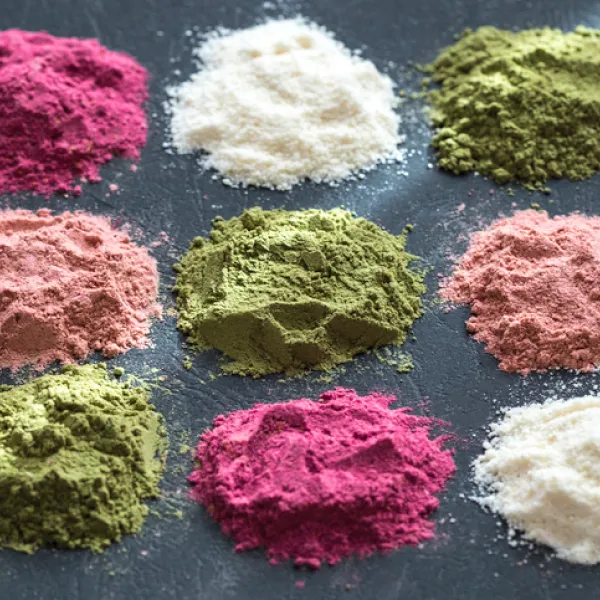
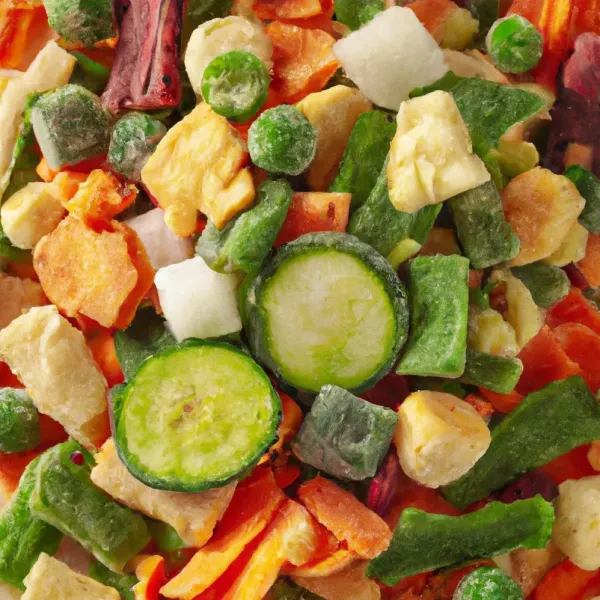

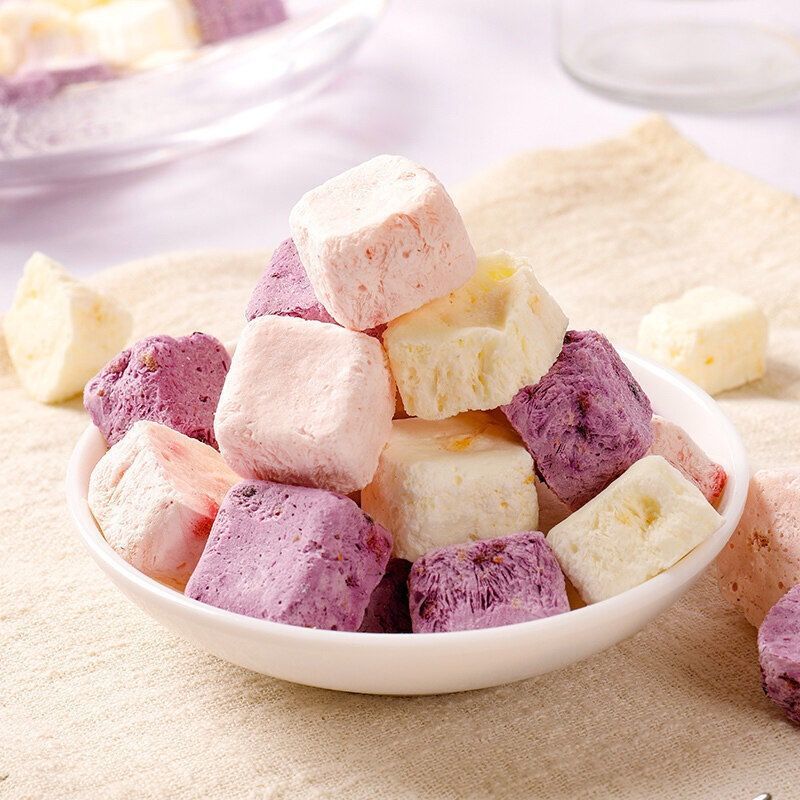
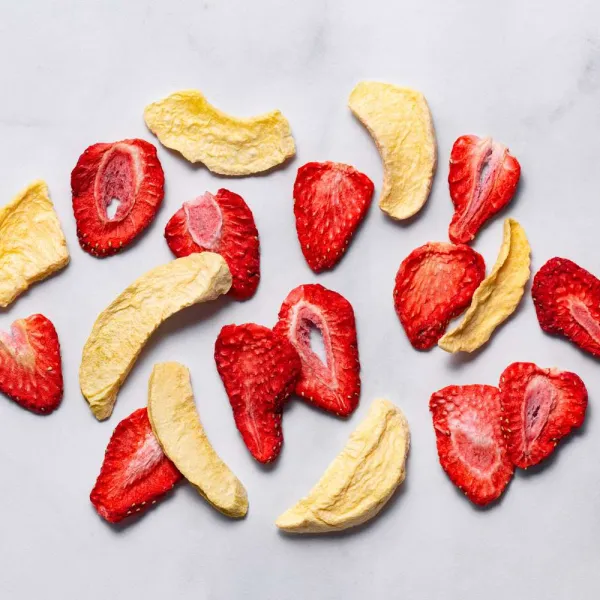
You may also be interested in
Are Freeze Dried Strawberries Keto-Friendly? A Comprehensive Guide
Read more...May
Are Freeze Dried Fruits Nutritious? Unpacking Their Health Benefits and Nutritional Value
Read more...Apr
Where to Find Freeze Dried Fruit Wholesale: What Aisle is Freeze Dried Fruit In?
Read more...Apr
Is Freeze Dried Fruit Better Than Dehydrated? Exploring the Differences and Benefits
Read more...Apr
Is Freeze Dried Fruit Good for Weight Loss? Discover the Surprising Benefits!
Read more...Apr
How Long Will Freeze Dried Fruit Last? Understanding Shelf Life and Storage Tips
Read more...Mar